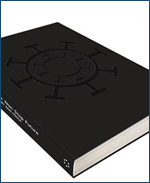Reflections on Building the European Cultural Backbone
The political agenda of the European Cultural Backbone and its associates still stands, and it will be interesting to see whether it will be upgraded by the Upgrade! generation, or whether, in a while, we will see ECB activists in politically influential positions where they can offer top-down support for what did not really make it as a bottom-up project.
There are more and less heroic moments in politics; there are also the moments when one confuses one's own camouflage outfit for the emperor's new clothes, or worse: Vice versa.
With hindsight, our collective attempts to construct the European Cultural Backbone (ECB) were an important yet, in the end, unsuccessful attempt to build a lobby group for independent media culture in Europe. At a series of meetings and conferences between 1997 and 2000, an international consortium of people representing small media art and media culture institutions from across Europe got together to develop a joint strategy for fostering their political position, locally and nationally as well as in relation to the European Union and its funding structures. Public Netbase was of course part of the core group, as were the Virtual Platform and De Waag from Amsterdam, the V2_Organisation from Rotterdam, Artec in London, m-cult in Helsinki, then a wider circle that included Ljudmila in Ljubljana, REX in Belgrade, E-Lab in Riga, the Ars Electronica Centre in Linz, Mute Magazine in London, and several others. It always looked impressive on paper, and had a truly great potential for formulating alternative positions to the industry-driven conceptions of the mutual relationship between technology, innovation, and culture.
The foundations were laid at the conference "P2P – From Practice to Policy" in Rotterdam and Amsterdam in 1997, during which the "Amsterdam Agenda" was drafted which is still a useful document that puts down the claims for an ICT policy that would draw on the critical innovation potential offered by cultural and artistic approaches to media and technology. Supported at the time by the Arts Council of England and the Dutch and the Austrian Ministries for Culture, an attempt was made to forge a more sustainable programme from this rich material that was, indeed, rooted in the practice of many artists, activists and organisers across Europe.
A more elaborate study would be able to analyse the potentials and failures in this attempt with greater detail. In my short-hand version, the greatest problem was that the entire enterprise rested on the shoulders of only a small number of individuals who already had full-scale precarious jobs on their hands. The institutions that they represented (and often today still work with) were most often little more than labels for these plus a couple of other people, highly mobile, highly effective not-for-profit cultural agencies with a very narrow capital base and dependent either on uncertain public funding, or on labour-intensive private income from self-initiated projects and commissions. Lots of brave and enthusiastic people on rafts and in rowing boats, rather than tankers or new economy-powered speed boats.
The European Cultural Backbone was, then, also not the only, even though maybe the most ambitious initiative in that fleet of cultural and network projects that connected media art and media culture institutions across the post-1989 Europe. The Syndicate network (1996-2001), for instance, fostered many links between individuals and institutions in East and West Europe, functioning both as a hub for information exchange, and as a periodical meeting place. The Next 5 Minutes conferences in Amsterdam (1993, 1996, 1999) played an important role as a forum for media artists and activists, connecting the European scene to much wider, global networks. Many of the personal relations on which long-term, artistic and political collaborations are built, were forged at such meetings and conferences. A number of temporary associations, like the regional NICE network, or the collaboration of several media art labs under the label ENCART, grew out of the ECB meetings and were able to place successful project applications, both with the Culture 2000 programme of the European Commission, and with other funding bodies. The work for the ECB had, without doubt, trained many of those involved to understand the logic, limitations and loop-holes of the international funding system, as well as the ability to make realistic estimations of the potential success rates of political initiatives.
For many initiatives and institutions in media art and culture the conditions are barely different from what they were ten years ago. The struggle for recognition continues, manifested in the battles for structural funding. Given the fact that Culture politics is still largely defined by the values of the 19th century, and given many media cultural initiatives continue to depend on only a small number of individuals with their passions and idiosyncrasies, it is hardly surprising that few of them have reached a level of stability which allows them to work at the level that is expected from any respectable cultural institution. (Instead, we all pray to Saint Precario, we hope that the next project application will be successful, and that the rearguard administration costs are not going to eat up our own honorarium.)
As modes of cultural works and networking, models like the Dorkbot or Upgrade! event series have proven quite successful in the last years, probably because they have avoided any call to ideological cohesion or even collective action. Rather, like in an open source licensing model, these projects loosely connect distributed local initiatives that share a global brand which proves to have its advantages for the local marketing efforts.
The political agenda of the European Cultural Backbone and its associates still stands, and it will be interesting to see whether it will be upgraded by the Upgrade! generation, or whether, in a while, we will see ECB activists in politically influential positions where they can offer top-down support for what did not really make it as a bottom-up project.

